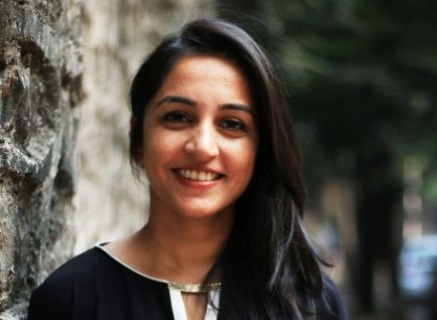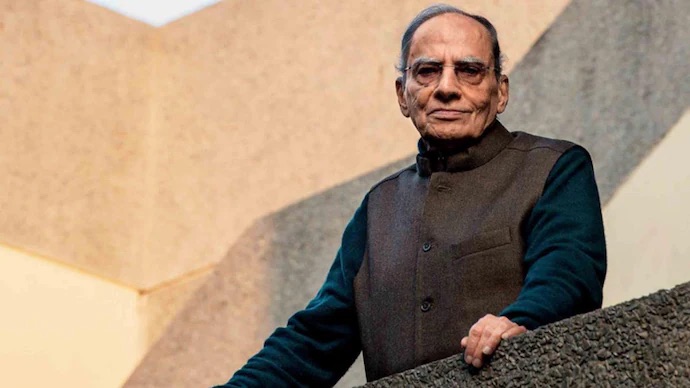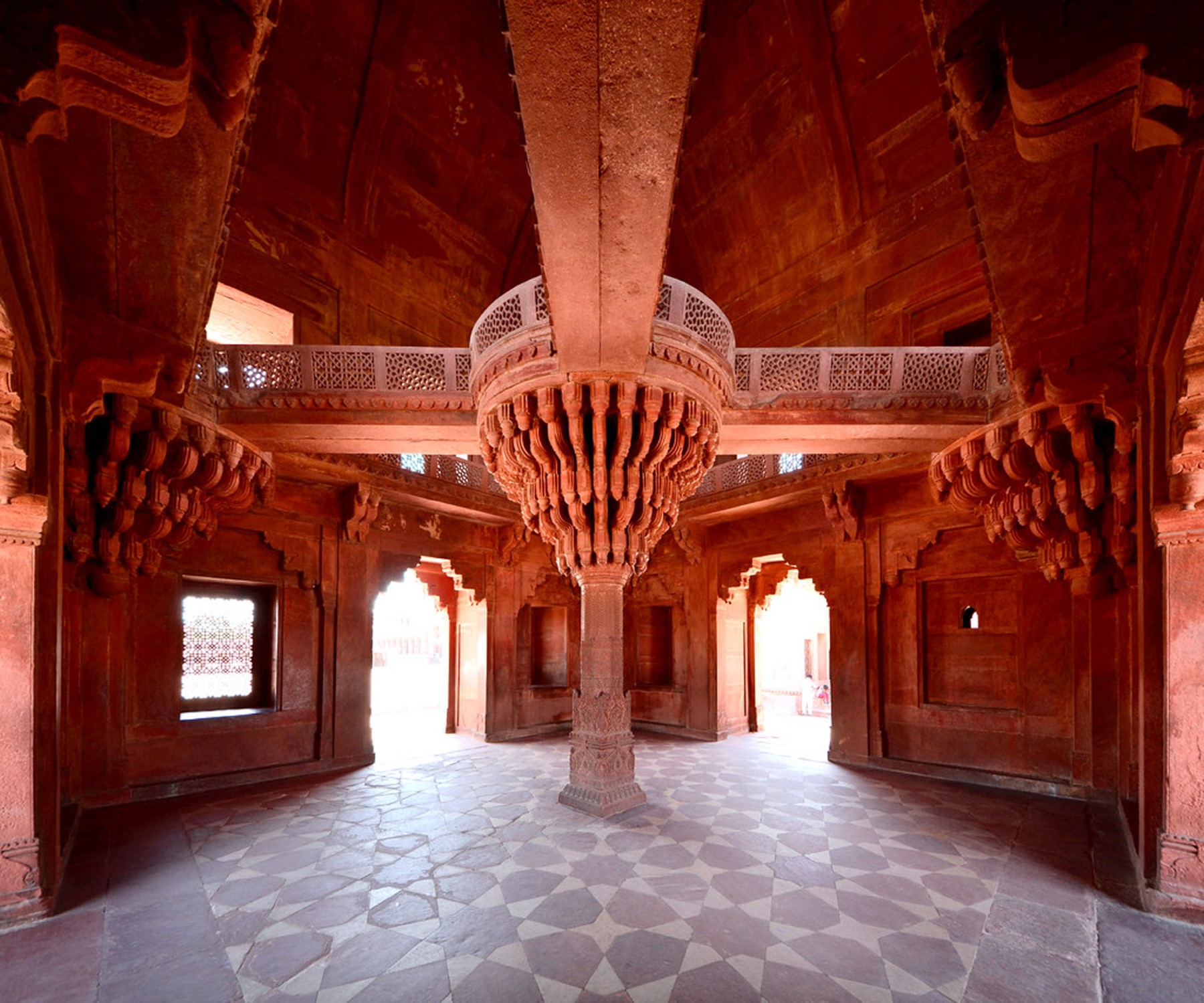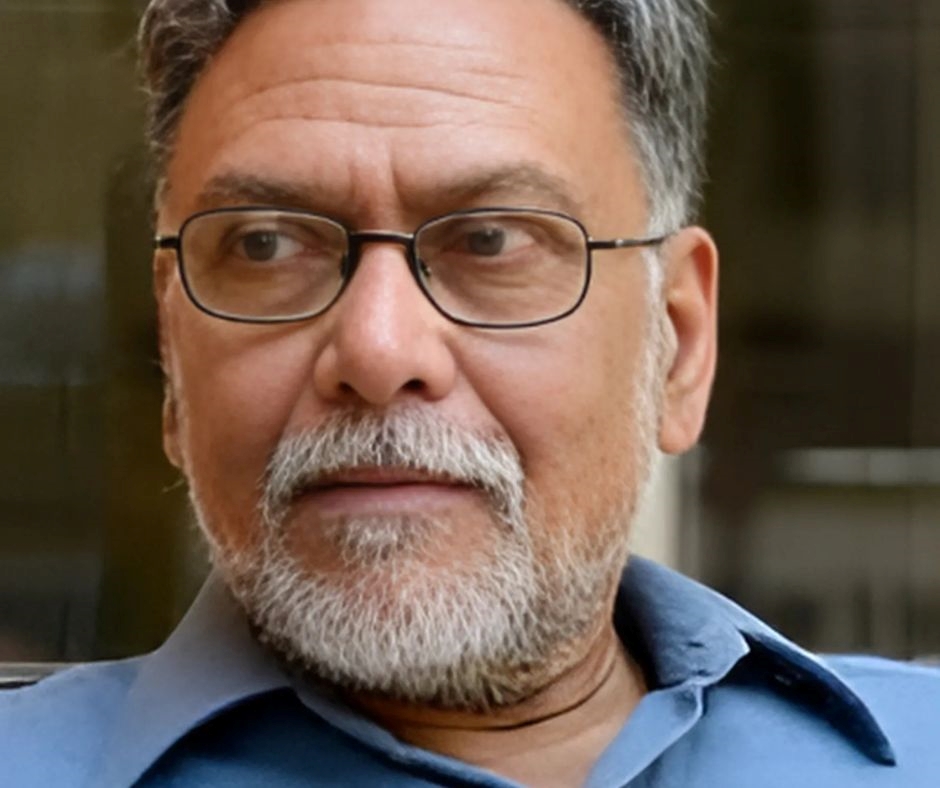Tell us about some important projects that your studio was involved in just before the lockdown.
We had several projects varying in scale and typology and different stages of design and construction before the lockdown. The global headquarters for Bharat Petroleum Corporation Limited (BPCL)- Mumbai, SINE, Entrepreneurship Centre and Residential blocks at IIT Mumbai, the Goa Institute of Management (GIM) in Sanquelim and the Bombay Scottish School, Mumbai to mention a few of our current projects.
Which were the biggest challenges and fears you faced because of the lockdown?
It was an important point to recognize that the pandemic had a global impact. This was not an industry-specific or country-specific issue. The greatest challenge was to ensure that there was a continuity of work throughout while keeping our people safe.
There were economic and social impacts which ranged from ensuring we could financially support our studio while making sure our people were also mentally and emotionally strong during this trying time. The physical disconnection from each other and our projects were of great concern. Architecture and design is a team-based profession and is about built work. To have that no longer accessible to us was a concern and we had to think innovatively to ensure that access through technology and other means. The fear of people getting COVID and the spread of the virus was uncertain initially, which was a cause for concern.
I don’t believe there was a precise list which we can put down to cover the challenges and fears- there were tangibles and intangibles. Each day brought new frontiers that had to be faced and these were unprecedented challenges. Our belief system was and still is to think ahead and plan, stay connected, take one day at a time and be positive. Digital Technology helped as we had daily and weekly Zoom talks with the Studio for presentations of old and current projects to keep the sense of ‘family’ going.
What were the challenges you faced with the monetary flow in your practice and how are you handling them?
We have always been a conservative practice in many ways. Through the years we have taken up only the kind of work which the size of our studio can work with to ensure quality output. This has held us in good stead and enabled us to create a portfolio of works that we are proud of today. The choice to stay a mid-size architecture and design firm is intentional and allows us to take a wide variety and scale of work while never compromising on the methodology of working and design. This also ensures we can financially remain efficient and able. When the pandemic hit everything paused until the world was able to assess and stabilize the situation. There was no immediate understanding of when things might resume causing uncertainty to our financial planning. We are fortunate to have had clients who were able to continue work and hence the payments came in at a slow pace. It also helped devise payment plans for the months ahead of the lockdown announcement. Existing work was in a questionable state and hence new work became a redundant option. We had to minimize our outgoing costs as much as we could to ensure we remained in a steady ship to sail through the storm.
We are proud to say that we paid our staff salaries every month during this pandemic. We have a record of never missing remittances to the team across our entire time in practice, which is over 45 years. For the latter part of the pandemic, we did introduce salary reductions in a tiered fashion. We also ensured that the directors and senior staff took the largest financial cut and eased up gradually. The SNK family stays strong and supportive through the tough times and the pandemic was no exception. As a studio, we have faced the various political and economic crises that impacted India across our four decades of practice. We continued our practice alongside times like the emergency, military and economic tensions, communal riots and more. We were able to keep our studio working and the staff paid through all these times. We feel proud to say that this crisis was also handled with the same care and determination to ensure we prevailed.
Were any new methods of work evolved during the lockdown?
The entire pandemic evolved an entirely new way of working! From technology being utilized in every facet of our work-from meetings to site visits to information sharing and interactions-our office became a virtual workspace. It took time to work out this way of functioning. The question always remains on how much technology can replace conventional physically working practice. When it comes to our profession it is not possible to go 100% digital. We are creatives who thrive on human interaction and physical meetings cannot be replaced. Site visits were conducted under strict, healthy and safety conditions. Using video streaming to update each team involved was an aid. Ensuring that regular team meetings were conducted to keep updated on work and stay motivated was vital. Working from Home (WFH) for the first few months of the lockdown was also about learning how to function in our personal spaces with family, and with many spatial and technological constraints. As a species, we evolve and adapt and this pandemic was another checkpoint in this process.
How were the coordination issues resolved with the studio staff and on-site team?
Post pandemic we had certain projects that were in the construction administration stage that required consistent hand-holding. To ensure that there was never a break we shifted all our people to WFH one week before the lockdown, in anticipation of the same. Another milestone achieved was that our studio never stopped servicing our clients or our sites for even one day. Work continued on a digital platform to ensure this continuity. Sites were initially shut down till the health and safety SOP were in place. Coordination was challenging to begin with but gradually a process was built into the place that was a combination of site visits, virtual meetings and data shared through digital mediums.
What were the biggest learnings from the pandemic? And which decisions and new work methods you feel your studio will continue with for the future?
In our lifetimes we may be faced with a variety of challenges, some larger than others. The pandemic is a global catastrophe that forced us all to pause our lives. This pause had a huge impact on our work and personal environments to which we had to adapt. The pause also allowed us to step back and look at our manner of working and living in an introspective way, enabling us to think more innovatively, sustainably and holistically for the future.
The learnings from the pandemic are many and to express them all would be an effort gone futile since we’re trying to scale numerous takeaways in words. However, the big learnings do include anticipating situations, being empathetic, positivity at all times and finally resilience. There is a phrase – ‘Tabula rasa’, meaning to wipe the slate clean and start again. In this case, we have the knowledge of our past with which we hope to write fresh perspectives ahead.
Additionally, the digital world has become further intertwined in our lives. At the same time, the value of physical interactions has been brought to light during this pandemic. As a studio, we have found a balance between the two allowing for an increase in efficiency and productivity. We hope to continue building on this and refine the process further based on our working methodology. This we believe will enable high-quality results while maintaining a work-life balance for all.
Please share a few words about any construction approval processes being influenced by the lockdown. How have the development authorities responded to you and did they share any instructions regarding the approval processes?
With the coming on COVID-19 and the sudden shut down of all activities the construction sites and processes were heavily impacted. It was the government and regulatory bodies that were able to commence partial working hours. Many procedures have now gone digital which is beneficial in many ways. We were in touch with authorities regarding the health and safety aspects to be met for the resumption of work on sites. Working within those parameters enabled the slow-starting of work across different levels. When approvals were required departments were available and functioning. The process was slower which was to be expected but issuing of the necessary feedback or approvals or clarifications was carried out.
Our greatest strength as Indians is our ability to continue forward no matter the adversity of the situation. This was certainly the case across the board as it was the need of the hour, for the survival of many that work continued.
How have your contractors and labour network been influenced by the lockdown and what measures have you made to sustain or revive them?
Concerns of labourers were one of the most important and challenging issues that we faced as an industry. The exodus of migrant labours has to be documented in detail. Understanding the human side of the issue and ensuring we manage such situations more cohesively and humanely in the future is of great importance.
We were always in touch with our contractors regarding the status of our studio’s on-site labour network. For all those who stayed, we ensured that the sites were complying strictly with the safety regulations in place and assured continued work for them. Most of them returned to their homes and it was reassuring to see the contractors hiring buses to for a safe journey of their workforce. We adjusted work schedules with contractors to enable continuity of site work depending on the labour available.
The slow down was apparent even in the procurement of building materials which was also a huge challenge during this time. Some parts of the country were differently affected than others and progress of work differed on that basis. After the first few months, the labour began to return and was reassured of safe and healthy living quarters and on-site conditions. Our contactors ensured the same with the highest priority.
As a studio, we have always been very conscious of the value of our labour. We have built creches for them on our sites and ensured clean water and living conditions are available. Safe transportation and their skill improvement training are some more aspects which we have been working towards over the past four decades. We physically inspect labour camps on our sites around India to ensure these conditions are being met. We have always believed in the immense value of those that use their hands to build our designs and make them a reality. This pandemic has brought to light the immense value of labour, and that their safety and security should remain a priority.
Are you involved in any off-studio/allied initiatives such as office collaborations, NGO and social projects, working with authorities, photography, writing, research, conservation etc? How were these initiatives influenced by the lockdown, and how are you handling them?
Lockdown resulted in assisting those requiring food during the pandemic which we did through various NGOs. Conservation is an existing and vital part of our practice and has continued to be so during the pandemic.
Writing, webinars and courses were also ways in which we continued to keep ourselves aware of and engaged in. Learning new skills such as origami, organic farming, a new language and musical instruments also assisted as fresh creative outlets, which weren’t possible before.
“Time has a wonderful way of showing us what really matters”- Anonymous.
I do believe that is the greatest lesson learnt during this pandemic.
About the practice:
Please let us know about the founding year, principals, team and studio.
SNK Somaya and Kalappa Consultants are a Mumbai based architecture practice led by Founder Architect Brinda Somaya and Principal Architect and Director Nandini Somaya Sampat. SNK was started up by Brinda Somaya from her home in 1975 and has now grown across their 45-year journey into a multifaceted practice with areas of expertise in Architecture, Master Planning, Urban Design, Conservation, Graphics, Interior Design and Landscape.
Brinda Somaya completed her Bachelor of Architecture from Mumbai University and her Master of Arts from Smith College in Northampton, MA, USA. Nandini Somaya Sampat joined the design world after deciding to shift professions from being a solicitor to pursue her passion. After completing her studies in College of Law, London, and a brief experience as a corporate Lawyer, Nandini took up a Postgraduate Diploma course in Architectural Interior Design from the Inchbald School of Design, London. Following this Nandini returned to her hometown of Mumbai to finish a Bachelor’s in Architecture at Rizvi College of Architecture.
After four decades of spearheading her practice into various areas of the profession, Brinda Somaya has passed the baton to her daughter Nandini to carry SNK ahead into their future with refreshed foundations. Brinda Somaya’s experience has studded her career with a vast array of recognized architecture projects, accompanied by accolades at the national and international levels. She has also held administrative and board positions in institutions of architecture in India and abroad. Across her achievements and professional accomplishments, Brinda Somaya has evolved the studio’s practice philosophy that the architect plays a guardian’s role. “Hers is the conscience of the built and unbuilt environment.” On that note, the practice focuses on including values of nature, people’s cultures and their heritage, alongside respecting local material resources for design execution.
Appending values to this established line of thought, Nandini’s belief that practitioners must become students of other verticals such as Ecology, Archaeology, Sociology, History and the Arts widens SNK’s knowledge bandwidth to achieve more comprehensive designs. Being a student of a wider knowledge breadth, Nandini believes that architects can adapt to more innovative and research-based thought and ways of building.
What are some of the processes and work methods unique to your practice?
Our practice spans 45 years and this time has evolved our working methodology. As the world changed, it equipped us to adapt and innovate for new challenges. However, there are basic principles which remain the foundation of the practice and continue to be the basis of all the work we do. Each project is unique and has its journey and narrative. Our process is research-based and we begin with deep-diving into the specific typology or area associated with the project. This allows for cumulative ideation and innovative thinking during the conceptual design process. Every person working at SNK is also responsible for a project in its entirety. This gives a sense of ownership to our designers and architects while also ensuring continuity of personnel working on the project. This means that each person can manage all aspects of a project from concept to construction and administration. They are trained holistically in the design methodology, creative and technical. Our team also possesses experts for all our areas of work in verticals. These include master planning, commercial, institutional, hospitality, conservation, residential and more.







